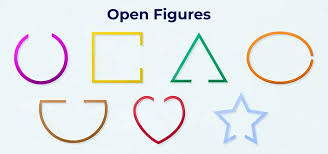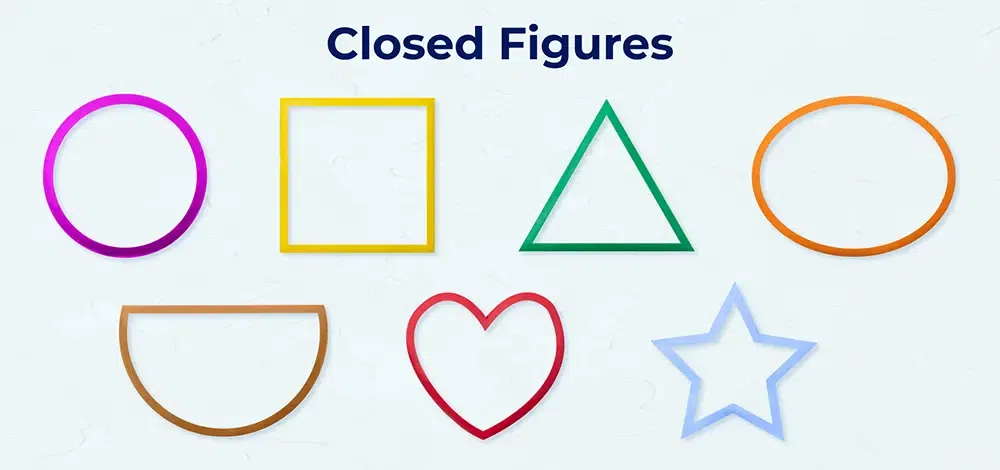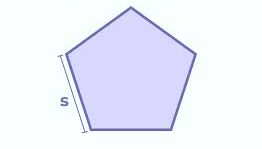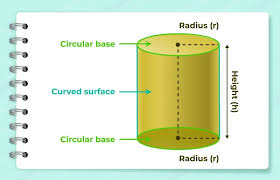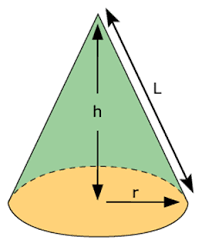
A shape is the outline or boundary that gives an object its form. Everywhere we look, we are surrounded by different shapes. Think of the round face of a clock, the rectangular frame of a smartphone, or the cylindrical shape of a water bottle.
A soccer ball is a sphere, while a sheet of paper is a rectangle. When you look at a traffic sign, you might see a triangle or a hexagon. Shapes are classified into 2D (two-dimensional) and 3D (three-dimensional) categories. Recognizing these shapes helps us understand the world better, whether we are solving math problems, designing buildings, or identifying objects in daily life. [video width="1920" height="1080" mp4="https://www.pw.live/exams/wp-content/uploads/2024/12/curious-jr.mp4"][/video]What are the S hapes?
What are 2D Shapes?
2D shapes , or two-dimensional shapes, are flat figures that lie on a plane. They have only two dimensions: length and width . Because they are flat, 2D shapes do not have depth or volume. You can draw 2D shapes on paper, and they can’t be physically held or measured in three dimensions. Here are a few common 2D shapes and their properties:Circle
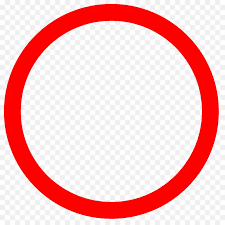 A circle is a round shape with no sides or corners. Every point on the boundary of a circle is equidistant from the center.
Properties
: No sides, no vertices (corners), and infinite lines of symmetry.
Examples
:
C
oins, wheels, plates, and clock faces.
A circle is a round shape with no sides or corners. Every point on the boundary of a circle is equidistant from the center.
Properties
: No sides, no vertices (corners), and infinite lines of symmetry.
Examples
:
C
oins, wheels, plates, and clock faces.
Triangle
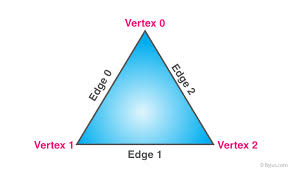 A triangle is a three-sided polygon. Triangles can be classified by their side lengths (equilateral, isosceles, scalene) or by their angles (acute, obtuse, right).
Properties
: Three sides, three vertices, and the sum of interior angles is always 180°.
Examples
: road signs, roof trusses, and pizza slices.
A triangle is a three-sided polygon. Triangles can be classified by their side lengths (equilateral, isosceles, scalene) or by their angles (acute, obtuse, right).
Properties
: Three sides, three vertices, and the sum of interior angles is always 180°.
Examples
: road signs, roof trusses, and pizza slices.
Square
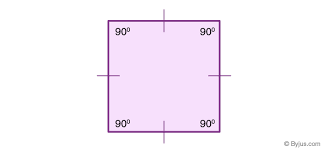 A square has four equal sides and four right angles (90°). All sides are of equal length, and opposite sides are parallel.
Properties
: Four equal sides, four vertices, and four lines of symmetry.
Examples
:
C
hessboards, tiles, and windows.
A square has four equal sides and four right angles (90°). All sides are of equal length, and opposite sides are parallel.
Properties
: Four equal sides, four vertices, and four lines of symmetry.
Examples
:
C
hessboards, tiles, and windows.
Rectangle
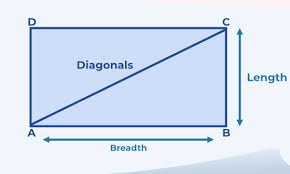 A rectangle has opposite sides that are equal in length and four right angles. It is similar to a square but with varying side lengths.
Properties
: Four sides (opposite sides equal), four vertices, and two lines of symmetry.
Examples
: books, doors, and laptop screens.
A rectangle has opposite sides that are equal in length and four right angles. It is similar to a square but with varying side lengths.
Properties
: Four sides (opposite sides equal), four vertices, and two lines of symmetry.
Examples
: books, doors, and laptop screens.
Oval
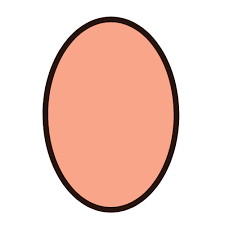 An oval is an elongated circle, often described as an egg shape.
Properties
: No straight sides or vertices, and it has one continuous curved line.
Examples
: eggs, balloons, and racetracks.
An oval is an elongated circle, often described as an egg shape.
Properties
: No straight sides or vertices, and it has one continuous curved line.
Examples
: eggs, balloons, and racetracks.
Hexagon
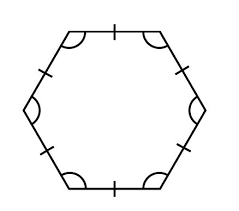 A hexagon has six sides and six vertices. It is commonly seen in nature and design.
Properties
: Six sides, six vertices, and the sum of interior angles is 720°.
Examples
:
H
oneycomb patterns, nuts and bolts, and tiles.
A hexagon has six sides and six vertices. It is commonly seen in nature and design.
Properties
: Six sides, six vertices, and the sum of interior angles is 720°.
Examples
:
H
oneycomb patterns, nuts and bolts, and tiles.
Octagon
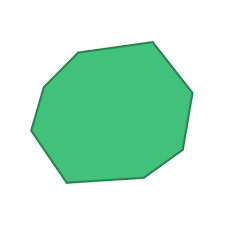 An octag
on has eight sides an
in traffic signs.
d is often used
Properties
: Eight sides, eight vertices, and the sum of interior angles is 1080°.
Examples
: Stop signs, umbrella tops, and mirrors.
An octag
on has eight sides an
in traffic signs.
d is often used
Properties
: Eight sides, eight vertices, and the sum of interior angles is 1080°.
Examples
: Stop signs, umbrella tops, and mirrors.
What are 3D Shapes?
3D shapes , or three-dimensional shapes, are solid objects with three dimensions: length, width, and height (or depth). Unlike 2D shapes, 3D shapes have volume and can be physically held and measured in all three dimensions.Here are a few common 3D shapes and their properties:
Cube
A cube is a solid with six equal square faces. Each face meets another at a right angle.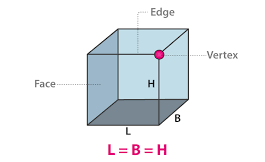 Properties
: Six faces, twelve edges, and eight vertices.
Examples
: Dice, Rubik’s cubes, and ice cubes.
Properties
: Six faces, twelve edges, and eight vertices.
Examples
: Dice, Rubik’s cubes, and ice cubes.
Cuboid
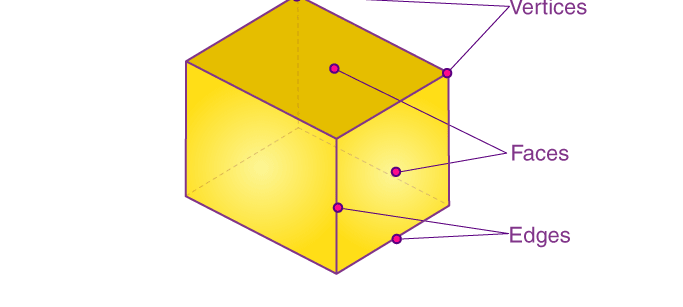 A cuboid is similar to a cube but with rectangular faces.
Properties
: Six rectangular faces, twelve edges, and eight vertices.
Examples
: Bricks, books, and shoeboxes.
A cuboid is similar to a cube but with rectangular faces.
Properties
: Six rectangular faces, twelve edges, and eight vertices.
Examples
: Bricks, books, and shoeboxes.
Sphere
A sphere is a perfectly round 3D shape.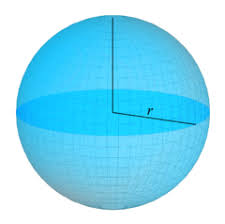 Properties
: No edges, no vertices, and a continuous curved surface.
Examples
: Balls, globes, and marbles.
Properties
: No edges, no vertices, and a continuous curved surface.
Examples
: Balls, globes, and marbles.
Pyramid
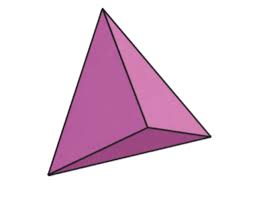 A pyramid has a polygonal base and triangular faces that meet at a point (apex).
Properties
: Varies by base shape (triangular, square, etc.).
Examples
: Egyptian pyramids, tents, and roofs.
A pyramid has a polygonal base and triangular faces that meet at a point (apex).
Properties
: Varies by base shape (triangular, square, etc.).
Examples
: Egyptian pyramids, tents, and roofs.
Torus
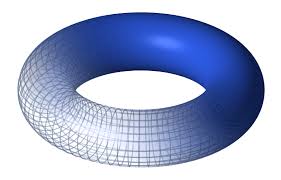 A torus resembles a donut shape.
Properties
: No vertices, no edges.
Examples
: Lifebuoys, bagels, and rubber rings.
A torus resembles a donut shape.
Properties
: No vertices, no edges.
Examples
: Lifebuoys, bagels, and rubber rings.
Practice Questions on Shapes
Identify and classify the different types of Shapes Question 1: Which of the following shapes is an example of a closed shape? A. Letter C B. Letter O C. A broken line D. An open arc Question 2: What type of shape is a pizza slice? A. Circle B. Rectangle C. Triangle D. Oval Question 3: Which of these is a 3D shape? A. Square B. Triangle C. Cube D. Circle Question 4: Identify the shape with no sides and no corners: A. Pentagon B. Circle C. Rectangle D. TriangleFill in the Blanks
- A shape that starts and ends at the same point is called a __________ shape.
- A __________ has three sides and three vertices.
- A 3D shape with six equal square faces is a __________.
- An open shape does not __________ at both ends.
True or False
- A square is an example of a 3D shape. ( False )
- A sphere has no edges or vertices. ( True )
- An oval has straight sides. ( False )
- A cube is a 3D shape with all faces in the shape of squares. ( True)
| Related Articles | |
| Subtraction Sums | Word Problems |
| What is an Abacus? | Math Puzzles |
| Multiplication Worksheets : | Multiplication Sums |
Shapes FAQs
Why is it important for children to learn about different shapes early on?
Learning about different shapes early on helps children develop spatial awareness, problem-solving skills, and foundational math concepts. It also enhances their ability to recognize patterns and understand the world around them.
How can I identify shapes?
You can identify shapes by observing their characteristics, such as the number of sides, angles, vertices (corners), and edges. Look for patterns like curves, straight lines, and symmetry to classify them.
What is the difference between a cube and a cuboid?
A cube and a cuboid are both three-dimensional shapes, but they differ in their dimensions.
Cube: All six faces are squares, meaning all sides are of equal length. Example: Dice, Rubik's Cube.
Cuboid: Faces are rectangles, and its length, width, and height can be different. Example: Books, bricks.
How do shapes impact the design of everyday objects?
Shapes affect how everyday objects work and look. For example, circles help wheels roll smoothly, rectangles make books easy to stack, and cylinders make bottles easy to hold. Shapes make objects more useful and attractive.
Talk to a counsellorHave doubts? Our support team will be happy to assist you!

Free Learning Resources
PW Books
Notes (Class 10-12)
PW Study Materials
Notes (Class 6-9)
Ncert Solutions
Govt Exams
Class 6th to 12th Online Courses
Govt Job Exams Courses
UPSC Coaching
Defence Exam Coaching
Gate Exam Coaching
Other Exams
Know about Physics Wallah
Physics Wallah is an Indian edtech platform that provides accessible & comprehensive learning experiences to students from Class 6th to postgraduate level. We also provide extensive NCERT solutions, sample paper, NEET, JEE Mains, BITSAT previous year papers & more such resources to students. Physics Wallah also caters to over 3.5 million registered students and over 78 lakh+ Youtube subscribers with 4.8 rating on its app.
We Stand Out because
We provide students with intensive courses with India’s qualified & experienced faculties & mentors. PW strives to make the learning experience comprehensive and accessible for students of all sections of society. We believe in empowering every single student who couldn't dream of a good career in engineering and medical field earlier.
Our Key Focus Areas
Physics Wallah's main focus is to make the learning experience as economical as possible for all students. With our affordable courses like Lakshya, Udaan and Arjuna and many others, we have been able to provide a platform for lakhs of aspirants. From providing Chemistry, Maths, Physics formula to giving e-books of eminent authors like RD Sharma, RS Aggarwal and Lakhmir Singh, PW focuses on every single student's need for preparation.
What Makes Us Different
Physics Wallah strives to develop a comprehensive pedagogical structure for students, where they get a state-of-the-art learning experience with study material and resources. Apart from catering students preparing for JEE Mains and NEET, PW also provides study material for each state board like Uttar Pradesh, Bihar, and others
Copyright © 2025 Physicswallah Limited All rights reserved.
Get App
